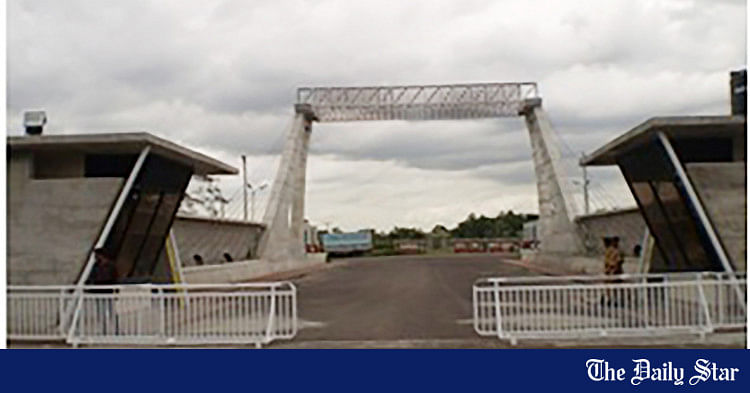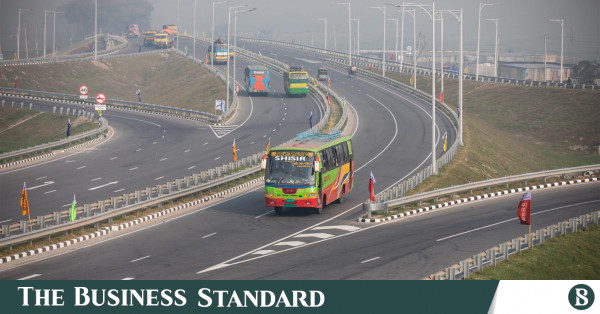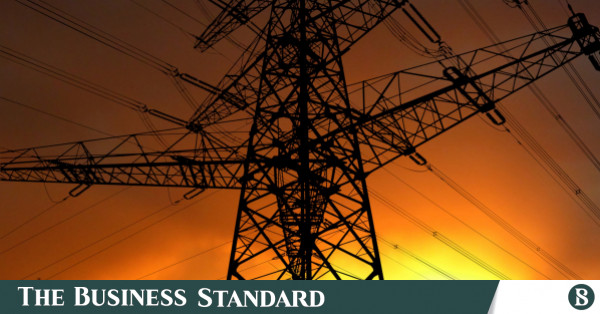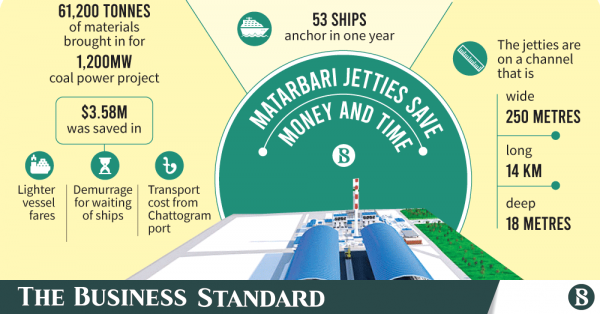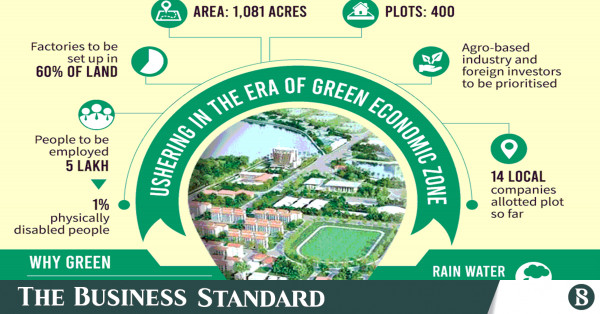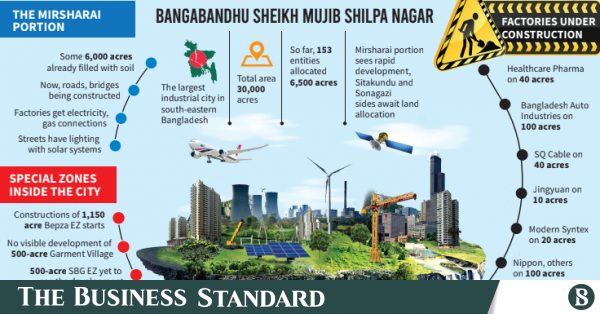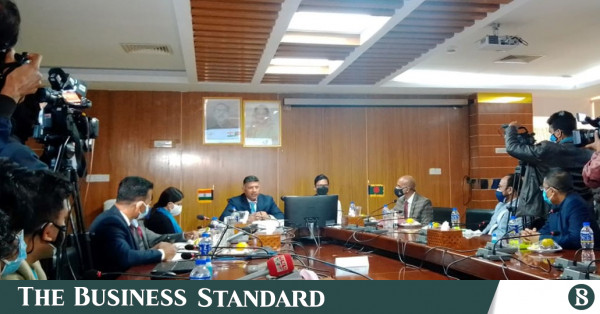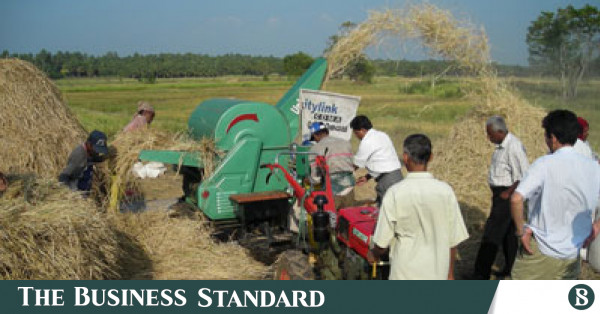The New Mooring Overflow Container Yard at the Chattogram port started its journey on Sunday.
The yard can accommodate 4,000 TEUs (twenty-foot equivalent units) of containers, which increases the port's container capacity from 49,000 TEUs to 53,000 TEUs.
Port officials said the yard built at the Freeport Junction in Chattogram will greatly reduce the possibility of container congestion in the future.
Bad weather and delays in unloading goods cause container congestion at the port. Besides, containers pile up in the port if importers take longer for delivery of goods than usual.
According to Chattogram port officials, the foundation stone of the New Mooring Overflow Container Yard was laid in 2016. The yard, sprawling over 34 acres of land, was constructed in two phases and it cost around Tk175 crore.
In 2021, the Chattogram port handled 32.14 lakh TEUs of containers, which was the highest in the last 44 years.
Port Chairman Rear Admiral M Shahjahan said, "Mobility has increased in the port, which is good news for us. The whole country is moving forward through this. The port is the main gateway to the progress of Bangladesh. Different countries want to invest in the Chattogram port."
Port Secretary Omar Faruk said, "The port's capacity is increasing through the implementation of various projects. The port can now hold more than 50,000 TEUs of containers."
The New Mooring Overflow Container Yard at the Chattogram port started its journey on Sunday. The yard can accommodate 4,000 TEUs (twenty-foot equivalent units) of containers, which increases the port's container capacity from 49,000 TEUs to 53,000 TEUs. Port officials said the yard built at the...

www.tbsnews.net
After retirement from the police, Mostafa Golam Quddus established a sweater factory in Bangladesh in 1987 – marking the country's entrance into the global sweater market mostly dominated by China at that time.
He flew in 43 Chinese experts for his factory and what happened next astounded the local business community – he exported products worth $3 million in the first year of the experimental start. Quddus's Cheung Hing Sweater has not looked back ever since.
The $3 million export has grown to more than $4 billion over time, and is expanding further as Bangladesh continues to gain more and more of the international sweater market.
Automated production lines now hum round the clock in nearly 400 sweater factories while manual hand flat knitting devices have been replaced by modern and automated Jacquard machines.
Pullovers, cardigans, jumpers and mufflers are included in the basic knitwear category.
Sweater has logged 27% export growth in the past six years as China pulled out from sweater-making, according to the Bangladesh Garment Manufacturers and Exporters Association (BGMEA). Exporters say the growth in this area is relatively higher compared to other items.
With a supercharged demand as economies reopened shaking off Covid fear, sweater-makers now eye fresh investment and factory expansion.
In 2021, there were five new investments while several sweater-making units expanded production capacity, says BGMEA Vice-President Shahidullah Azim.
Two entrepreneurs tell The Business Standard that they will put more money in sweater-making in the next two years. Shahidullah Azim also hopes investment in sweater manufacturing will increase in upcoming months.
Mostafa Golam Quddus, who had to hire Chinese workers for making sweaters, says creating a trained local workforce was a game changer for Bangladesh's business.
The former president of the BGMEA is now well-known for his Dragon Sweater, a knitting and spinning project he launched in 1993 after training the local workforce.
"Our success inspired many to invest in sweater making and paved the way for bringing in modern technology and upgraded machines," he notes.
Local entrepreneurs in expansion mood as China pulls out
With China as the major supplier, the current size of the international sweater market is around $104 billion. The other key players are Bangladesh, Cambodia, Turkiye, Vietnam and Myanmar.
Mohiuddin Alamgir Romel, managing director of Global Knitwear, says China is leaving the global sweater market owing to rise in production costs and because sweaters are a basic knitwear item. Bangladeshi entrepreneurs are to gain hugely in the upcoming years from the exit.
Designtex Knitwear, which now owns three factories, began producing sweaters in the 2000s. The owner of the company Khandoker Rafiqul Islam plans to increase investment in sweater-making by the end of 2022.
Rafiqul Islam, whose production units currently employ over 8,000 workers, tells TBS that the existing factories have increased their capacity in recent years rather than setting up new ones.
Mohiuddin Alamgir Romel also says they will scale up sweater investment – although he gives no details.
Low-cost items dominate the basket
Entrepreneurs say they mainly manufacture low-cost sweaters and export those for only $4-$6 per piece. Only a few factories export high-value items but in a low quantity.
Local sweater-makers can boost their earnings through making expensive items like "Cashmere wool sweaters", which are valued at $100-$150 apiece. Raw materials meant for producing it are available in India, China, and Mongolia.
Mohiuddin Alamgir Romel said an entrepreneur took an initiative to make this expensive item in his factory inside Cumilla EPZ but was not successful.
Bangladeshi makers now export sweaters made of acrylic fiber and some fashionable accessories to get some extra prices.
Some 20 to 25 factories are engaged in the large-scale export of sweaters in the country.
The list includes Pioneer Knitwear (BD) Ltd., Refat Garments, Square Fashions, Flamingo Fashion, Eurozone Fashion, Pakiza Knit Composite Ltd, AG Dresses Ltd. GMS Composite Knitting Ind Ltd, Nipa Fashion Wear Industry Ltd, AKH Knitting & Dying, Aswad Composite Mills, Cotton Club (BD), Matrix Sweater, Target Sweater, and Rupayan Sweaters.
Skilled sweater-maker crisis
Even more than three decades after the initial sweater-making journey, a severe scarcity of skilled workforce still dogs the entrepreneurs. The owners also said unusual price hikes of cotton in recent times also threw challenges at them.
Besides, they are lagging behind in terms of innovation, setting up design centres and a strong backward linkage.
To top it all, harmonised system code related complexities got in the way of raw material imports. Sweater-makers are also struggling to get orders from most of the big brands.
Moreover, a huge investment is required for setting up a factory in this sector, which is not possible for entrepreneurs with relatively small capital.
Mohiuddin said setting up a small factory with 200 machines would need $1.6 million on machines alone. As a result, investing in this sector is not easy.
This type of factory has to be kept running 24 hours a day, he said, adding at least half of these workers work at piece rates.
"The churn rate of these workers is high, which hampers production. Workers could be found easily in the past but now they have become scarce."
Sweater has logged 27% export growth in the past six years

www.tbsnews.net
Pran-RFL Group, one of the largest conglomerates in the country, plans to make huge investments to manufacture edible oil, flour, pulses, salt and other consumer staples to reposition itself as a leader in the consumer goods market.
The business group has already completed the construction of a large part of its new industrial park on a 180-bigha plot of land in Gazipur's Moktarpur to produce essential products. It is also setting up poultry farms in Moulvibazar and Habiganj, and a mobile phone manufacturing plant in Narsingdi.
Also, the group has taken initiatives to expand the production capacity of its garments, footwear and glassware factories.
Pran-RFL is set to invest at least Tk1,700 crore in 2022 alone, officials of the conglomerate have told The Business Standard. This will create 20,000 new jobs, they expect.
"We are investing in sectors that can meet the demand of local consumers and increase exports. We also want to help the agriculture sector grow and create employment," said Ahsan Khan Chowdhury, chairman and CEO of Pran-RFL Group.
Staples such as edible oil, flour, semolina, pulses, sugar, salt etc. constitute a significant portion of the huge consumer goods market, mentioned Kamruzzaman Kamal, director (marketing) of Pran-RFL Group, adding they are currently working on a plan to produce all types of essential goods except sugar.
Company officials said the new industrial park in Gazipur called Kaliganj Agro Processing Limited will have plants to process soybean and refine oil. There will also be units to produce flour, salt, pulses, starch, and feed meals, among other products.
The group plans to invest Tk1,500 crore in this sector this year, they said, adding goods produced in this industrial park are expected to hit the market by the end of the year.
As per Light Castle, a global market research company, Bangladesh has a consumer goods market of $200 billion or roughly Tk17,00,000 crore.
Currently, the market leaders in the consumer goods sector in the country are City Group, Meghna Group, TK Group, Bashundhara Group, S Alam Group, Abul Khair Group, etc. City Group alone has an annual turnover to the tune of around Tk25,000 crore.
Mobile handsets, garments and poultry
Pran-RFL Group has been in the country's electronics market for a long time with their brands Vision and Click. Now, they are going to produce mobile handsets under the brand name Proton.
For this, the company has already set up a factory at Pran Industrial Park in Narsingdi. The factory will produce smart and feature phones as well as various types of mobile accessories including headphones, batteries and chargers.
Pran's Proton phones will enter the country's Tk12,000-crore mobile phone market and compete with other brands including Samsung, Symphony, Walton, Vivo, Oppo, Realme, Techno, iTel, Infinix, Five Star, and Nokia among others.
Kamruzzaman Kamal, director (marketing) of Pran-RFL Group, said, "Our factory has the capacity to manufacture one lakh smartphones and 1.5 lakh feature phones per month. Proton phones will hit the market next March."
Even though Pran-RFL is a pioneer in agro-processing in the country, the group was not directly involved in poultry farming. This time they are setting up a poultry industry on 150 bighas of land in Moulvibazar and Chunarughat of Habiganj.
The company has already completed the infrastructural construction at a cost of Tk40 crore. Around 15 crore eggs and 360 tonnes of chicken meat would be produced here annually, officials said.
According to sources, the poultry market in Bangladesh has already exceeded Tk30,000 crore mark. Currently, there are more than one lakh poultry farms in the country and the number of registered parent stock farms is 206.
The country produces about 4.5 crore eggs and 3,000 tonnes of chicken meat per day.
Pran-RFL also looks to produce different types of underwear and polo shirts at the Barindra Industrial Park in Godagari of Rajshahi with an investment of Tk50 crore. Kamruzzaman Kamal said initially, 2,500 rural women will be employed here.
Expansion of footwear and glassware production
Officials at Pran-RFL Group also outlined the company's plans to expand its footwear and glassware plant amid the Covid-19 pandemic.
The existing shoe production capacity at their footwear factory at Narsingdi Industrial Park will be increased from six lakh pairs to nine lakh pairs at a cost of Tk35 crore, while the production capacity of the glassware factory will be tripled to 7.5 lakh square feet with an investment of Tk55 crore.
Founded by Amjad Khan Chowdhury at an initial investment of Tk5 lakh, Pran-RFL Group started its journey in 1981 as Rangpur Foundry Limited (RFL) with tubewells and agricultural equipment to provide pure drinking water and irrigation facilities to the poor.
In 1985, the company entered the food processing business with a small-scale cultivation of banana, papaya, pineapple, tuberose, etc in Narsingdi by forming Agricultural Marketing Company Limited.
Since then, Pran-RFL Group has been one of the market leaders in the country with a wide range of products including drinks, sauces, jellies, chanachur, chips, spices, chocolates, bakeries, frozen foods, toiletries, dairy products, housewares, and electronics.
At present, the company has an array of 2,800 products under 10 categories.
About 1,29,000 workers are working directly with the group, which is the highest in the private sector in Bangladesh. But, around 15 lakh people are directly and indirectly dependent on the group. The group has an annual turnover of over Tk20,000 crore.
Currently, Pran's products are available in 145 countries of five geographic regions including Southeast Asia, Middle East, Africa, Europe and North America. It has sales and distribution networks in the USA, Australia, UAE, Saudi-Arabia, Qatar, India, Oman, Malaysia, Singapore, and Somalia with full-fledged offices, warehouses and other support.
The group has started its own production plant in India to accelerate its continuous growth.
Pran-RFL Group, one of the largest conglomerates in the country, plans to make huge investments to manufacture edible oil, flour, pulses, salt and other consumer staples to reposition itself as a leader in the consumer goods market. The business group has already completed the construction of a...

www.tbsnews.net
The Cabinet Committee on Public Purchase (CCPP) has approved a proposal for setting up two solar power plants with a capacity of 120 MW at Muktagacha in Mymensingh and Ishwardi in Pabna.
The government will buy electricity from these two power plants at Tk8.12 per unit.
The committee approved the projects at a meeting chaired by Finance Minister AHM Mustafa Kamal on Wednesday, said Shamsul Arefin, additional secretary to the Cabinet Division.
"On the proposal of the Bangladesh Power Development Board, a 70 MW (AC) grid-tied solar power plant will be set up in Ishwardi. A consortium of Dihan Green Energy Limited, HI Korea Limited and Pabna Solar Power Limited will jointly implement the project."
The consortium signed a 20-year contract for the project that will cost Tk1,843 crore.
"A consortium of Total Eren of France, Norwegian Renewables Group of Norway and Urban Services Limited of Bangladesh has been awarded the contract to set up a 50 MW grid-tied solar power plant at Muktagacha. The total cost of the 20-year project is estimated at Tk1,315 crore," said Shamsul Arefin.
The committee also extended a contract with Venture Energy Resources Limited regarding the 40 MW power plant in Bhola. In the extended period, the government will purchase electricity from the gas-based rental power plant at Tk2.71 per unit, which was Tk2.79 earlier.
In addition to that, the committee has approved the Bangladesh Rural Electrification Board's proposal to buy 32,400 poles for Tk31 crore. Each pole will cost Tk9,677. Castle Construction and Poles and Concrete Limited will supply the poles.
The committee also approved a proposal of Bangladesh Chemical Industries Corporation (BCIC) to import 60,000 tonnes of urea fertiliser at Tk494 crore from the United Arab Emirates and Qatar.
The cabinet committee also approved the BCIC's proposal to import 25,000 tonnes of rock phosphate at Tk81.49 crore through Desh Trading Corporation.
The government will buy electricity from these two power plants at Tk8.12 per unit

www.tbsnews.net
The Asian Infrastructure Investment Bank (AIIB) has expressed its interest in financing the 88-kilometre Dhaka Inner Ring Road project, aimed at ensuring smooth travel from one end of the city to the other.
"The multilateral development bank has given its consent after we sent it a proposal seeking funds for the project," Kawsar Jahan, a deputy secretary at the Economic Relations Divisions (ERD), told The Business Standard.
"But the government has made a fresh plan to seek finance for a bunch of projects in Dhaka to eliminate traffic congestions in the country's busiest city. Currently, the Prime Minister's Office is handling the matter and we are yet to receive any update."
The Roads and Highways Department (RHD) is implementing the project at a cost of over Tk12,478 crore.
"In 2018, the department completed a feasibility study and then sent a preliminary development project proposal (PDPP) to the ERD on funding," said Md Sabuj Uddin Khan, additional chief engineer at the RHD.
"After getting approval from the Planning Commission, the ERD sent a proposal to the AIIB."
Sabuj Uddin said it is estimated that the acquisition of 61.87 hectares of land will cost Tk5,356 crore while the remaining Tk7,050 crore will be spent on construction work.
In line with the Revised Strategic Transport Plan (RSTP) of 2016, the government has taken up the project to make travelling from one end of Dhaka to the other without having to enter the city and in a faster way by avoiding tailbacks.
The project will be implemented in two parts. The first part – eastern bypass – will be 25km from Demra to Abdullahpur via Beraid, Purbachal and Teromukh.
And the 63km second part will cover Abdullahpur Rail Gate-Dhur-Birulia-Gabtoli-Swarighat-Babubazar-Kadamtali-Teghariya-Postagola-Chashara-Shimrail-Demra.
Under the project, two eight-lane bridges and nine overpasses, flyovers and U-loops will be built. Additionally, 29 underpasses, 47km pavements, six switch-gates and 86km drain-cum-footpath will be built.
In line with the RSTP, the government has taken up another project to build the Dhaka Outer Ring Road – a bypass road outside the periphery of the capital with a length of 132km for long-haul vehicles.
Through the bypass, vehicles from different districts will be able to go to another district without entering city traffic, said Md Rokibul Hasan, a transport planner at the Dhaka Transport Coordination Authority (DTCA) and in-charge of the project.
This project too will be implemented in two parts.
The 48km southern part will be from Hemayetpur (on the Dhaka-Aricha Highway) to Madanpur (on the Dhaka-Chattogram Highway) via Kalakandi (on the Dhaka-Mawa Highway) and 3rd Shitalakshya Bridge.
In April 2020, the authorities appointed a consultant to conduct the feasibility study and prepare a preliminary design of this part, which is nearing completion.
On the other hand, the DTCA is hiring consultants to conduct a field-level feasibility study on the remaining 64km.
In September 2019, the Cabinet Committee on Economic Affairs gave its assent for the implementation of the project on a public-private partnership (PPP) basis.
Currently, the PPP Authority is searching for an organisation that can provide funds for the project.
"We are considering Japan's Marubeni Corporation in the matter of a financing of the project. We have already had primary discussions, but could not proceed further as a detailed feasibility study remains to be done," Dr Najmus Sayadat, director (Investment Promotion) of the PPP Authority, told TBS.
"However, to conduct a study on economic viability, we will appoint a transaction advisory consultant. The appointment process may begin in two to three months and we hope the study will end in mid-2023."
About a field-level study, DTCA's Rokibul Hasan said, "We are going to appoint another consultant to conduct a detailed feasibility study and prepare a design. The appointment process will start in January and, hopefully, a consultant may be appointed by mid-February."
The consultant firm will then complete the study in 12 months. So the final feasibility study also may end in 2023, he added.
The existing Dhaka-Mawa Highway and the Dhaka-Narsingdi Highway will cover the rest 20km length of the 132km outer ring road.
The Roads and Highways Department (RHD) is implementing the project at a cost of over Tk12,478 crore

www.tbsnews.net
Chattogram is going to have a metro rail network as the second city in the country after Dhaka where the service is due to be launched in December this year.
Prime Minister Sheikh Hasina on Tuesday asked the authorities concerned to build the metro rail from the Shah Amanat International Airport to the Chattogram Railway Station in the port city.
She issued the directive at a meeting of the Executive Committee of the National Economic Council (Ecnec).
Planning Minister MA Mannan briefed journalists on the outcome of the meeting and said the Chattogram City Corporation has been asked to send a project proposal to this end.
The Planning Commission will then complete the process of approving the project proposal with due importance, he added.
The planning minister also said they should also plan metro rail-like development projects in other big cities of the country where there are large old airports.
The prime minister joined the meeting virtually from her official residence Ganabhaban while ministers and secretaries from the NEC meeting room at the city's Sher-e-Bangla Nagar.
The implementation of the first metro rail or Mass Rapid Transit (MRT-6) Line in Dhaka started in 2012 with Japanese funding. Initially, the project was supposed to be completed in 2024, but the work of the Uttara-Agargaon portion of MRT-6 will end in December this year following the PM's directive to finish it early.
The construction of the Agargaon-Motijheel portion will be completed in December 2023.
Till November last year, the progress of the MRT-6 Line was 89.88%.
The construction of two more metro rail routes in Dhaka is scheduled to begin this year.
The prime minister also instructed the authorities concerned to make arrangements for the water of the Chaktai canal in Chattogram to go underground, said MA Mannan.
She said the Chaktai canal water cannot move underground as the canal bed has been paved and this is causing waterlogging in the port city. She asked the authorities to take care of the matter.
At the Ecnec meeting, the premier emphasised setting up satellite towns instead of expanding the area of the Chattogram City Corporation, said MA Mannan.
The meeting also discussed the MRT-6 and other projects that are scheduled to end this year, he added.
The planning minister said work on two other mega projects – Padma Bridge and Karnaphuli Tunnel – would be completed this year.
He said once the projects are completed, economists believe that the country's economic growth will increase by 2-2.5%.
State Minister for Planning Dr Shamsul Alam said work on the Padma Bridge and Karnaphuli tunnel would be completed in June and October, respectively.
According to the feasibility study, once the Padma Bridge opens to traffic, the growth will increase by 1.2%. Although the survey report of the other two projects did not mention growth, the transportation of goods will increase.
He said once these three projects are completed, the growth could go up by 1.5-2%.
Meanwhile, the state minister for planning said that despite feasibility studies, the designs of development projects are being revised two to three times.
The contractors of the development projects are held responsible for such work, but no action is taken against organisations that conduct feasibility studies, he added.
"The prime minister has directed the authorities concerned to consider the matter with due importance," he added.
Sheikh Hasina also orders steps to end waterlogging in the port city

www.tbsnews.net

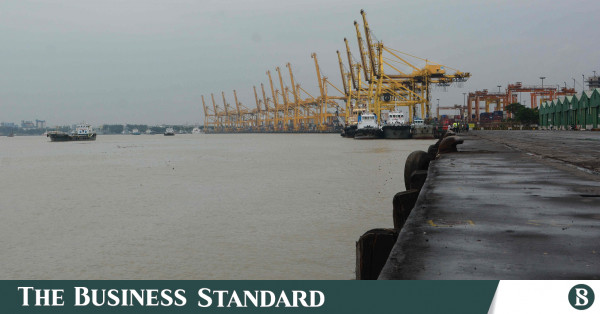


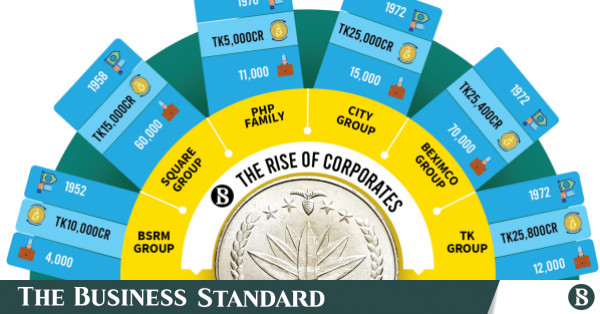
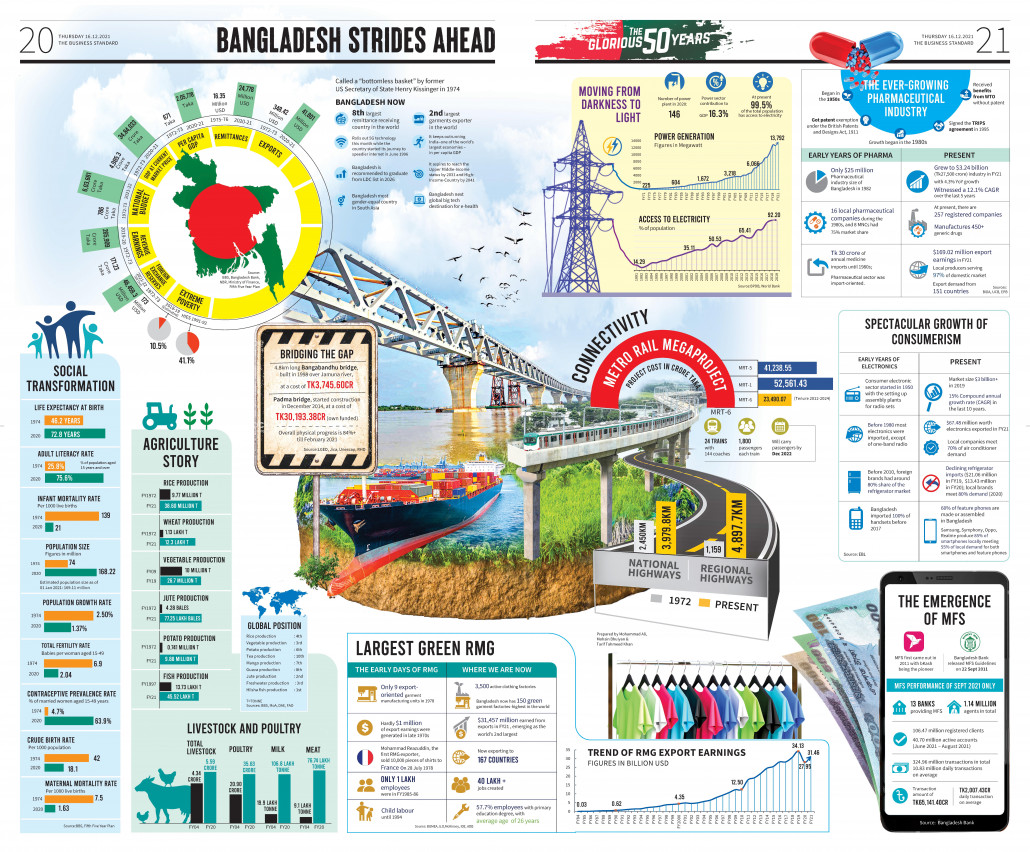
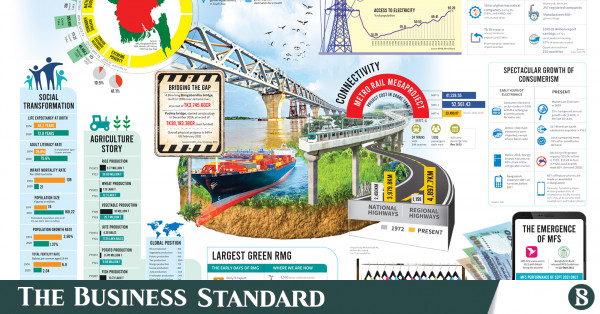
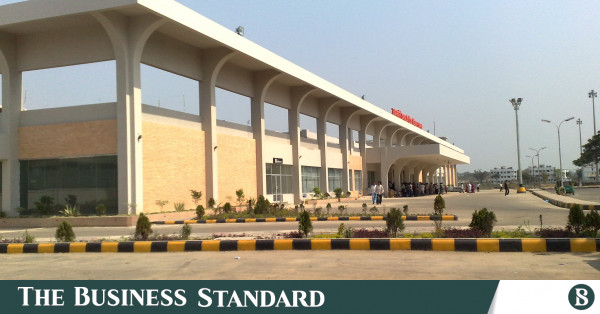
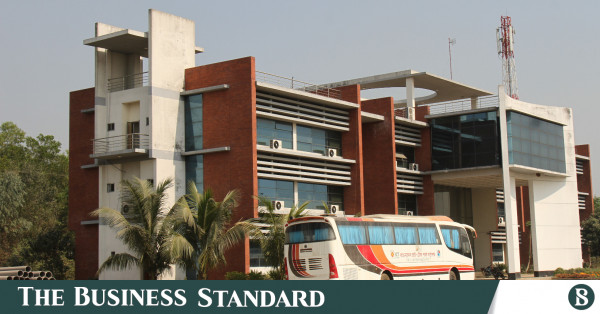

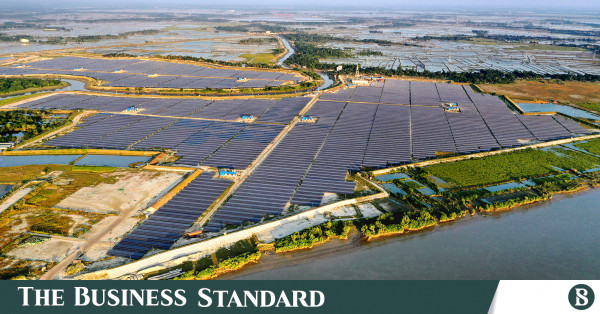
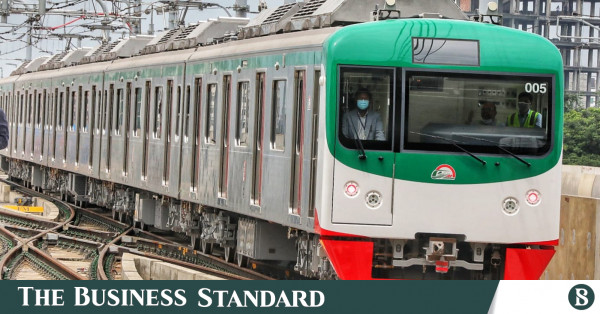
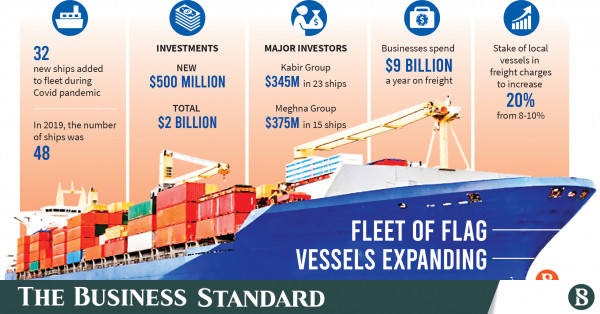
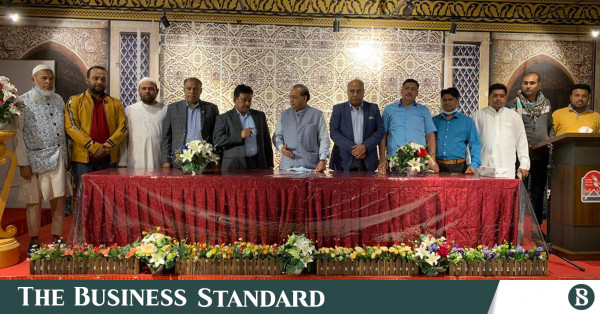

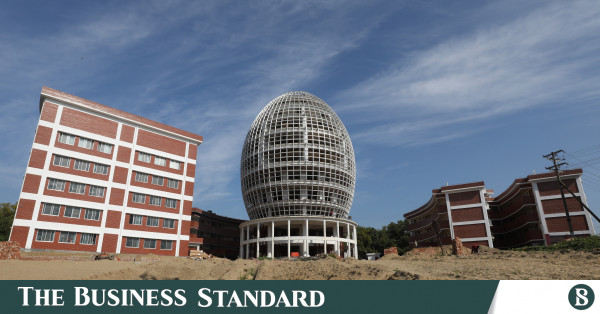
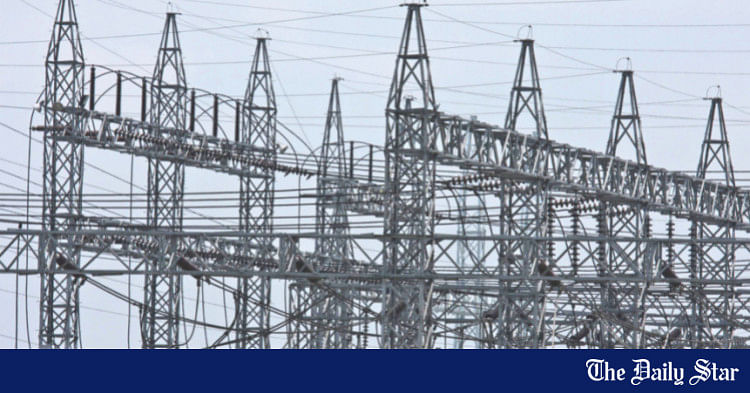
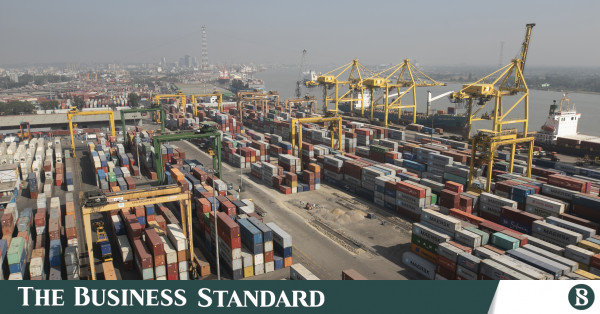

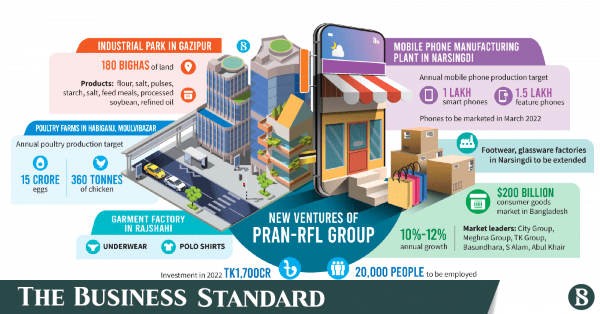

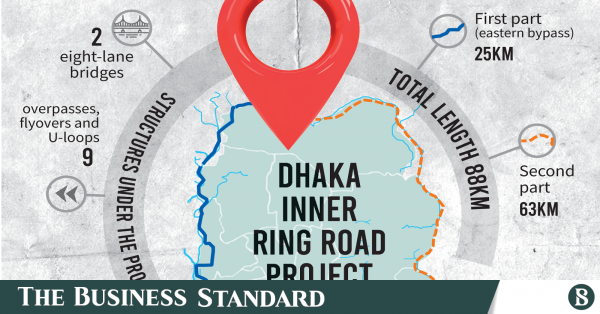

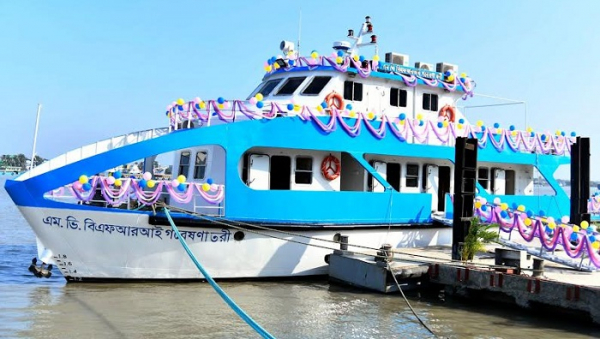
 www.khulnashipyard.com
www.khulnashipyard.com

